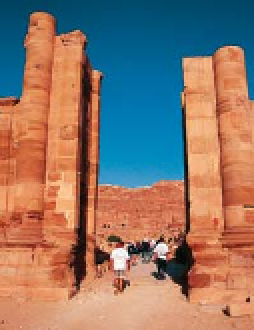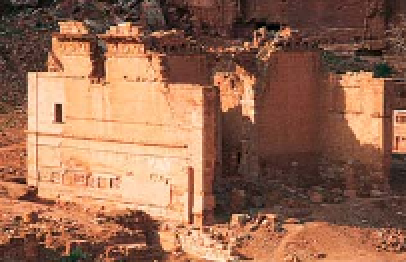Travel Reference
In-Depth Information
The City of Petra
Just past the theatre, the Outer Siq opens out into a
wide plain. The ruins of the city of Petra are in the
middle of this vast basin and the path alongside the Wadi
Musa leads down to the site. Today, fragmented remains
of the main street and a few nearby buildings are almost
all that is left of the great city that once filled the valley.
The grand Roman-style Cardo would have been Petra's
main artery, fringed with mark
city's most sacred temple, the Q
like all the important buildings
have been lavishly decorated. T
plasterwork and marble veneer
seen on its walls and steps.
Modern
Among th
are a ma
with lion
found in
Church a
carved pl
Nabataea
al-Uzza
(
in the Gr
The Old
in a roc
unusua
window
collectio
Qasr el-Bint el-Faroun
The name “Palace of the Pharao
Daughter” was a colourful inven
Bedouin mythology. The 1st-cent
building was probably Petra's ma
the huge slab of stone at the foot o
being an altar to the sun god Du
chief deity of the Nabataean pan
The imposing entrance to the
el-Bint had freestanding colum
massive, possibly meta
probably dates from after th
The carvings of animal deit
Nabataean slant on an otherwise Classical design.
For hotels and restaurants in this region see pp262-3 and pp279-80










































































































